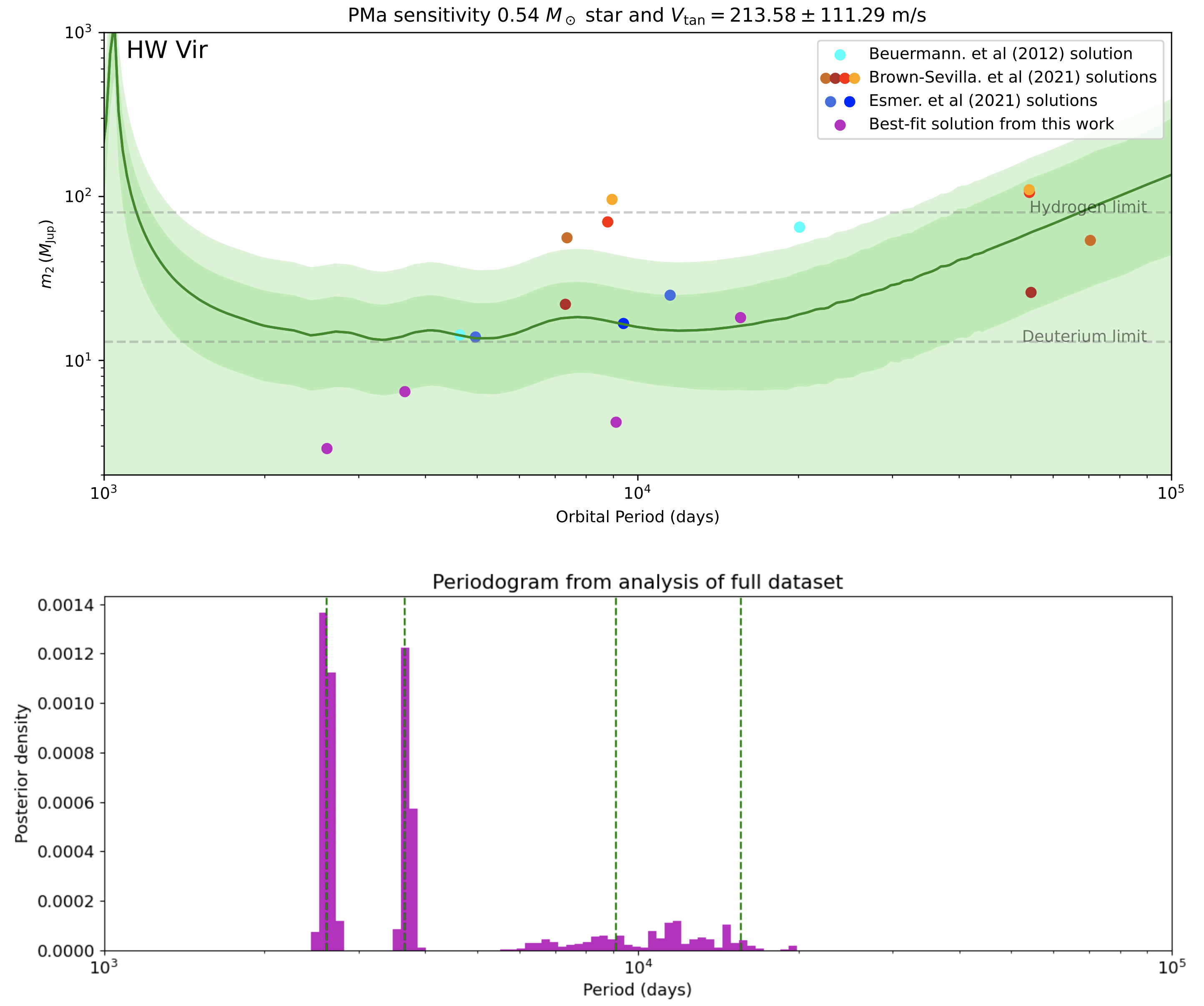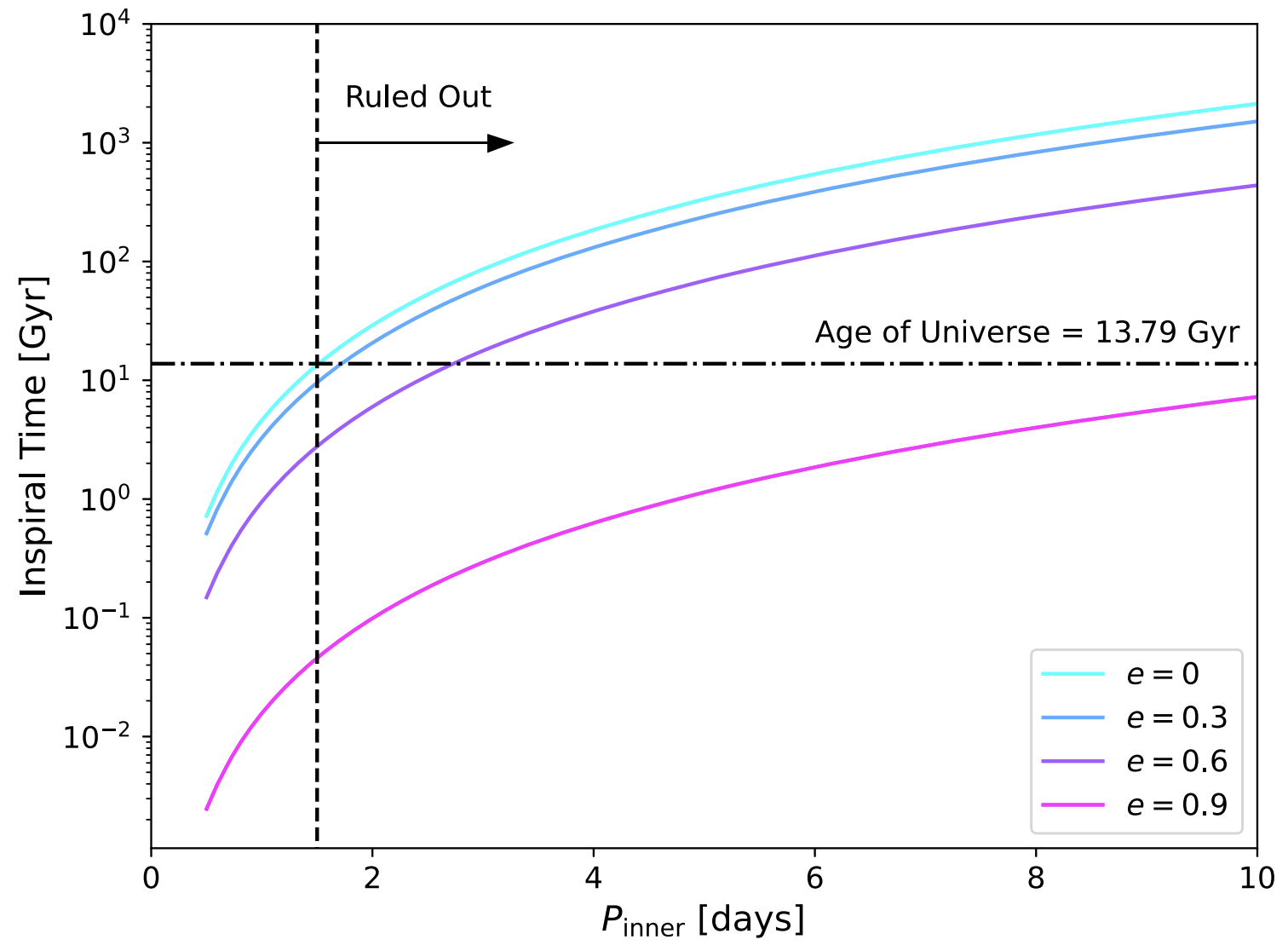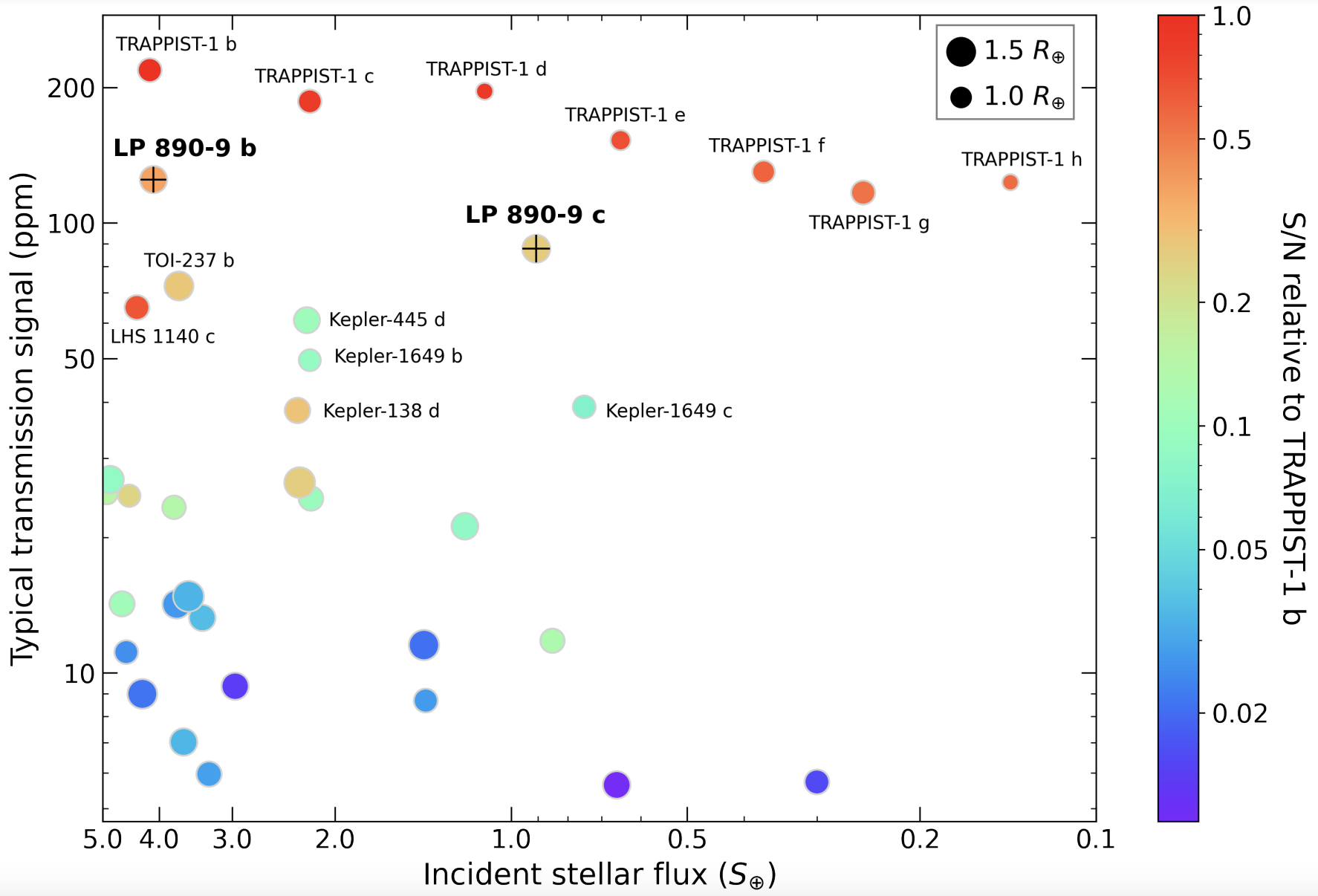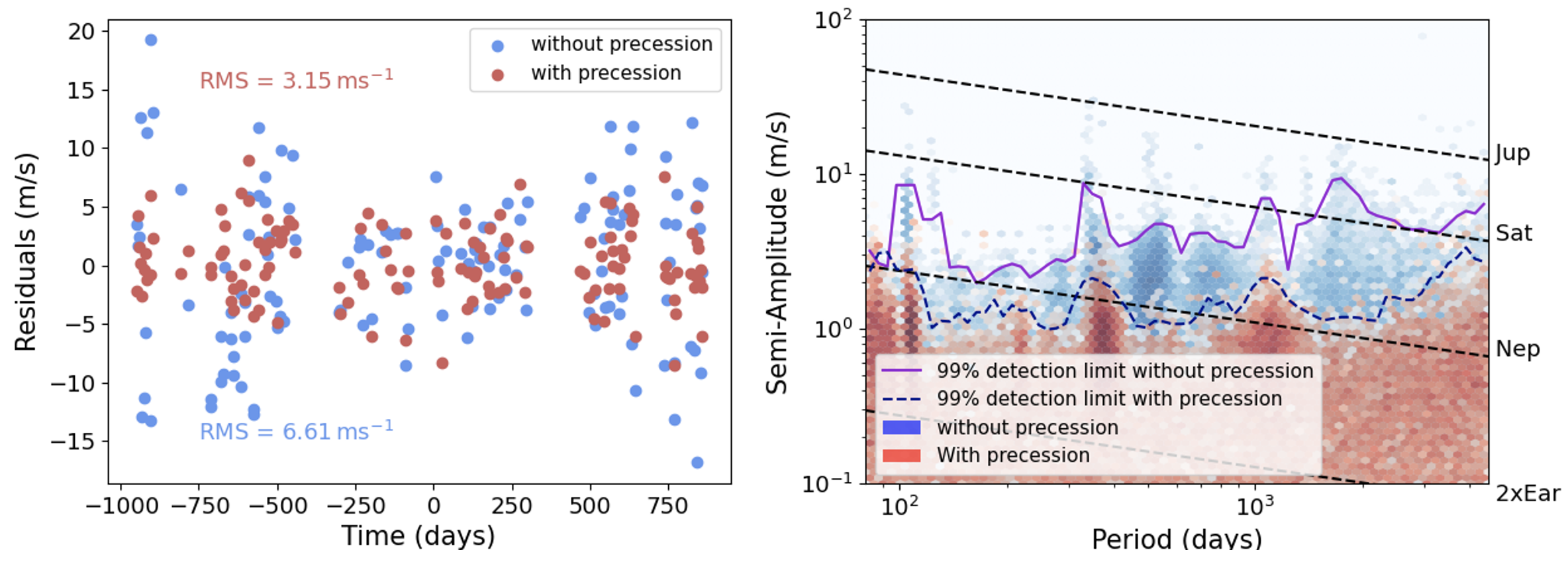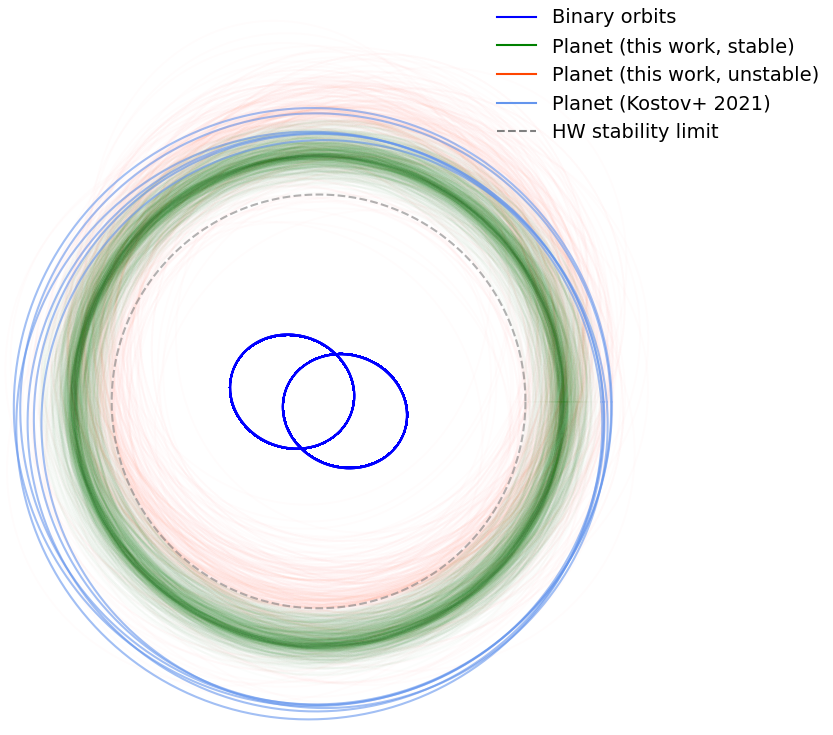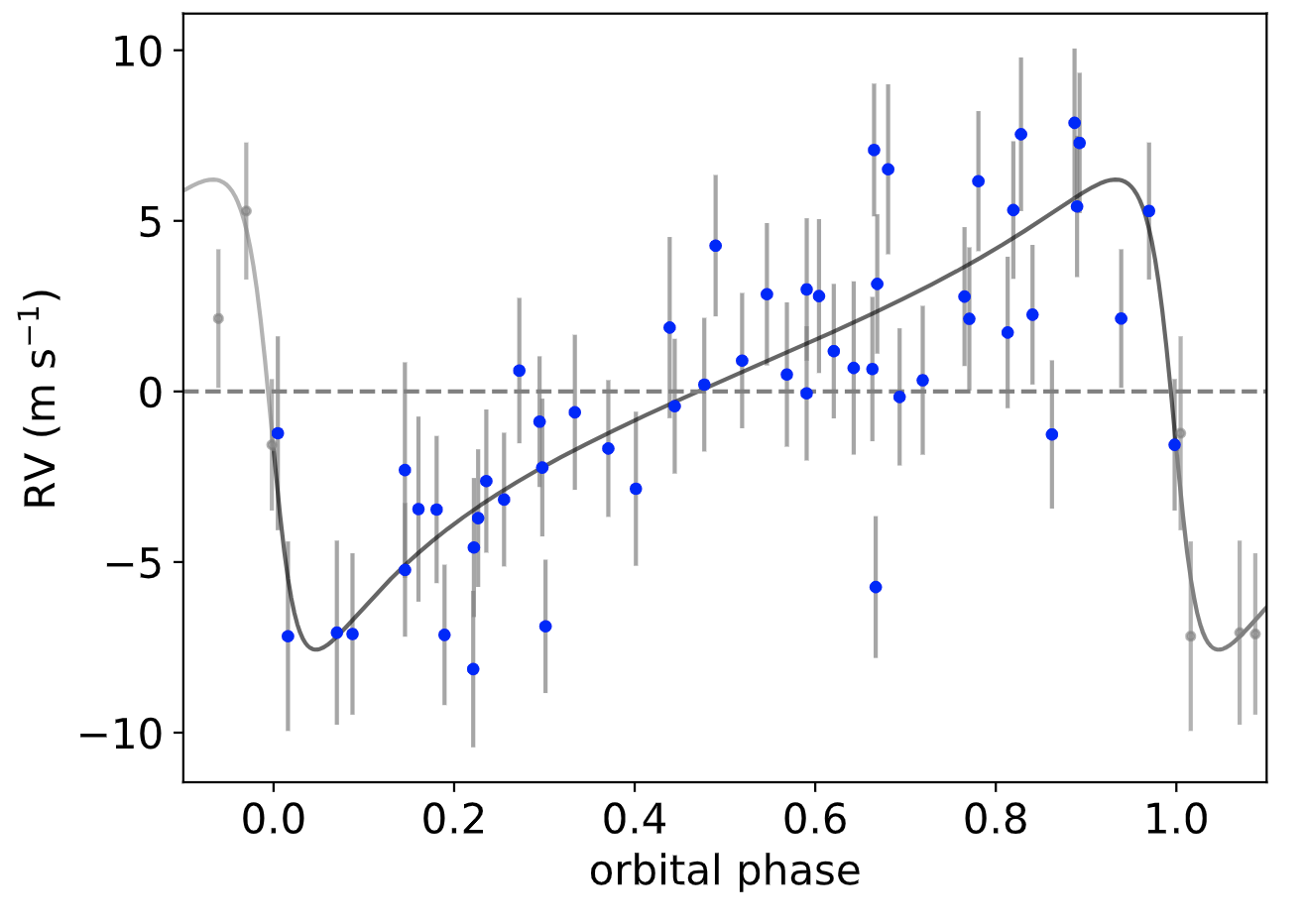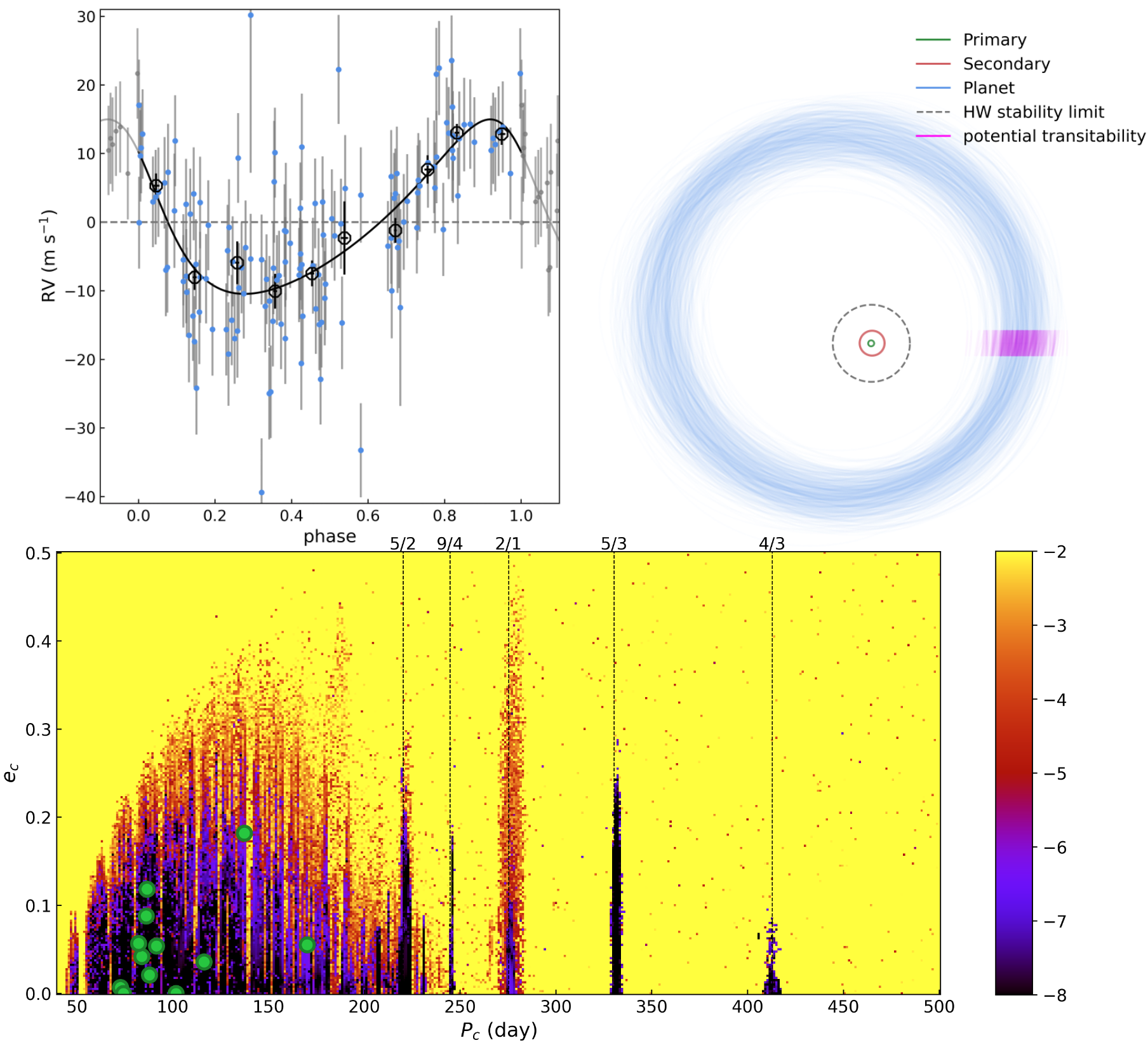
BEBOP VII. SOPHIE discovery of BEBOP-3b, a circumbinary giant planet on an eccentric orbit

Description:
BEBOP-3 is the first circumbinary system discovered with radial velocities. With data from the SOPHIE spectrograph at the Observatoire de Haute Provence we find strong evidence for the presence of a circumbinary planet, BEBOP-3b, with mass in between that of Saturn and Jupiter. BEBOP-3b is favoured to be on a mildly eccentric orbit and orbits it host binary in around 550 days. This planet was discovered as part of the BEBOP (Binaries Escorted by Orbiting Planets) survey.
In the plots shown here, on the top left is the phased radial velocity data and model. Top right is the orbits of the two stars and planet, showing a number of draws from the posterior distribution, the circumbinary stability boundary is also drawn showing that there is space interior to planet b's orbit. Bottom is a stability map for a potential additional inner planet with dark colours being more stable, the locations of the Kepler circumbinary planets (with periods scaled so that the binary orbital periods match) are shown and all lie within the stable region.
BEBOP VII. SOPHIE discovery of BEBOP-3b, a circumbinary giant planet on an eccentric orbit
Baycroft T. A et al.


